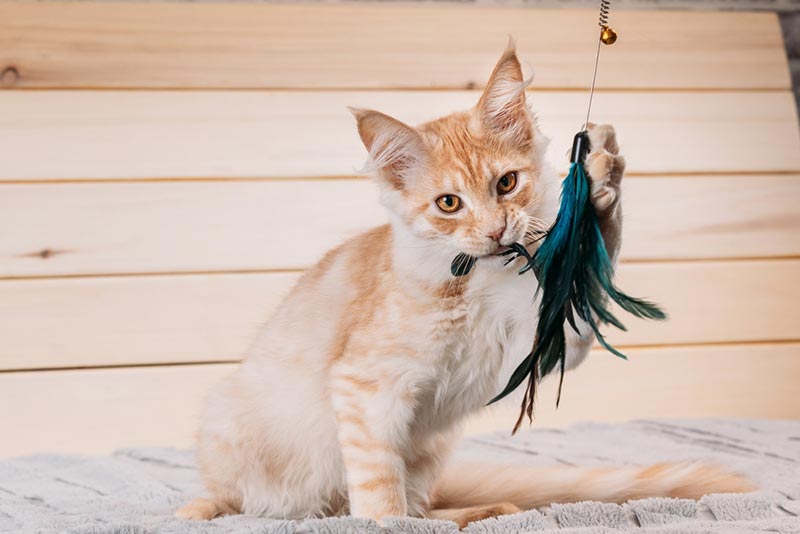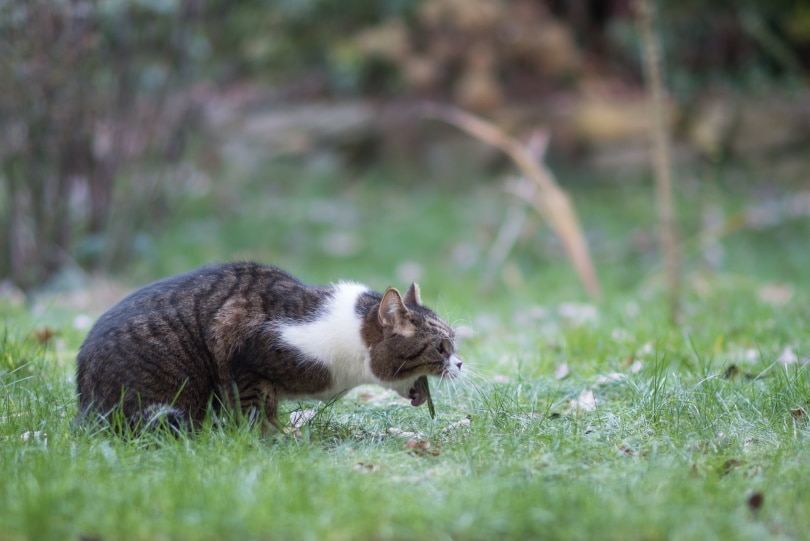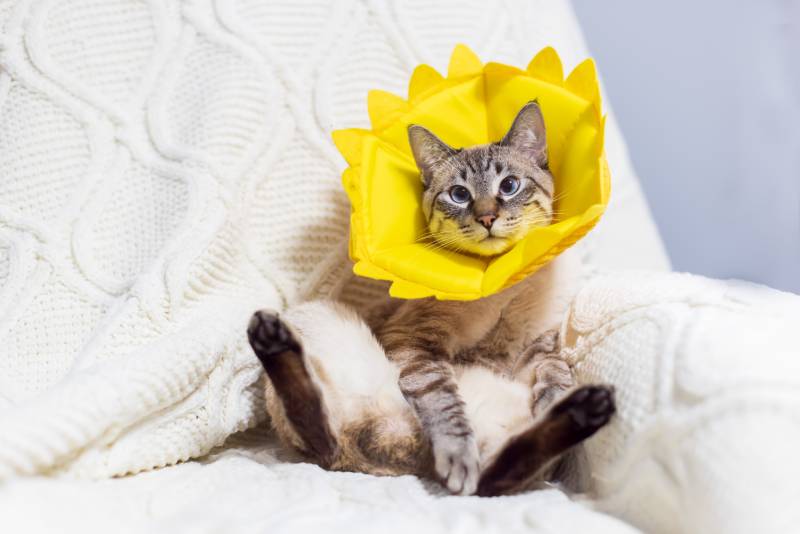
You probably don’t want to spend much time staring at your cat’s poop when you’re scooping it each day. It’s messy, it’s smelly, and you probably hate cleaning the litter box. However, the state of your cat’s bowel movements offers many clues to their health. But how do you know what’s normal and what you should be worried about?
In this article, we’ll cover 11 different types of cat poop and what to do if your cat has them. We’ve also included a handy chart at the end to help you visualize what we discussed.
Cat Poop Chart: What’s Normal & What’s Concerning?
1. Invisible Poop
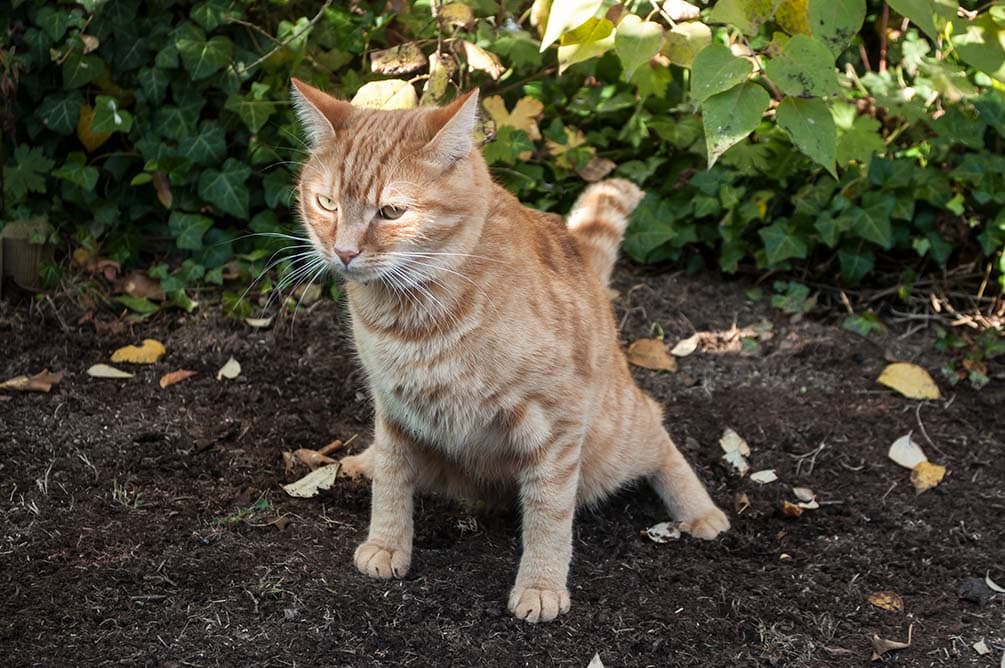
| Color | None |
| Frequency | No poop produced |
| Possible causes | constipation, obstipation |
If your cat’s poop seems invisible, it may be because they aren’t able to produce stool normally. Cats that strain to poop without leaving any evidence behind may be constipated or obstipated (fully impacted with poop). Your cat may be constipated for several reasons, such as not drinking enough water, hairballs, or even a pelvic fractur or tumor. An obstipated cat may develop a condition called megacolon, where the colon stretches too much and stops working altogether. If you suspect your cat is not able to defecate, contact your veterinarian.
2. Small, Hard Poop
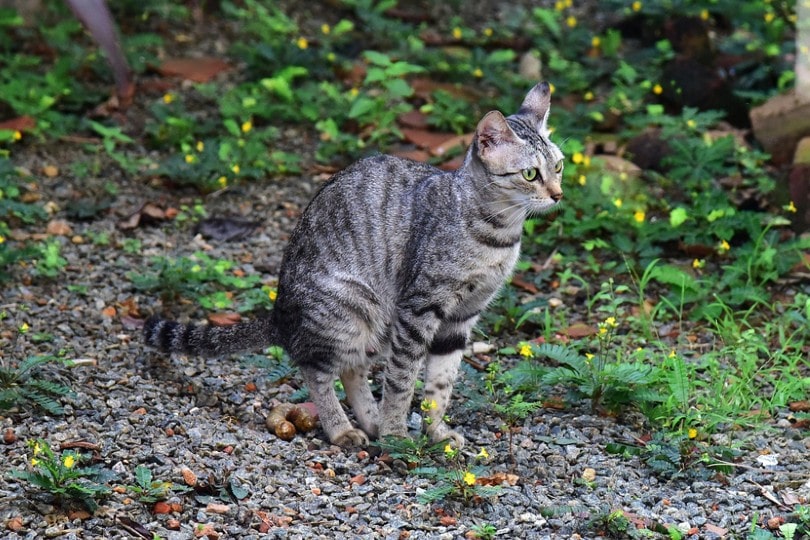
| Color | Brown |
| Frequency | Less than once a day |
| Possible causes | constipation |
Cats who poop less than once a day, strain to poop, and produce only small, hard nuggets of stool may be in the early stages of constipation. These cats may not be eating enough fiber or drinking enough water. If your cat squeezes out a thin ribbon of poop rather than forming pieces, it could have a tumor blocking part of its intestines. You’ll want to see your vet and find out what’s going on, but in the meantime, encourage your cat to drink more liquids or offer them canned food.
3. Normal Poop

| Color | Brown |
| Frequency | At least once a day |
| Possible causes | All is right with the intestines |
Normal cat poop should be firm but not too hard and smelly, but not too overwhelmingly foul. It’s usually a deep brown color but could be a bit lighter or darker depending on what your cat has been eating. If this is what you see, your cat is probably eating the right diet and staying well-hydrated. Pat yourself on the back if this is what you see when you scoop your litter box.
4. Pudding Poop
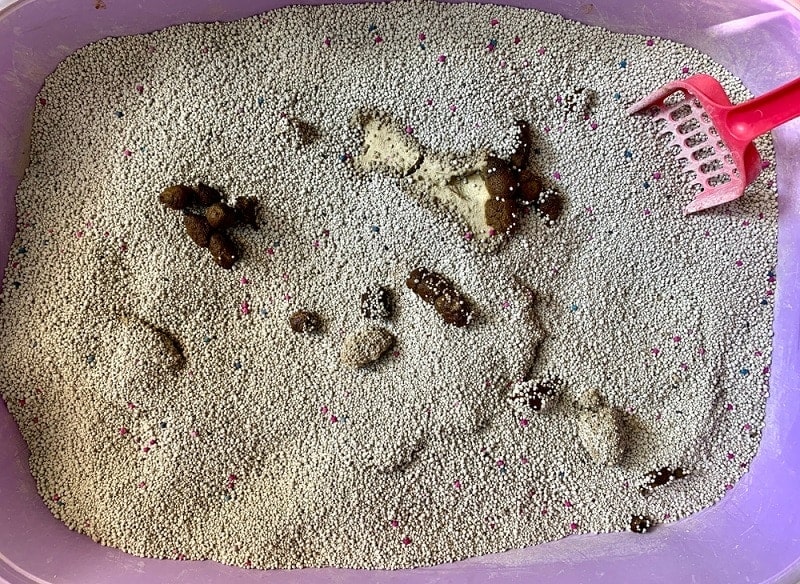
| Color | Light brown-brown |
| Frequency | 2–3 times a day |
| Possible causes | dietary indiscretion, inflammatory bowel disease (IBD) |
If your cat is pooping more frequently, two or three times per day, and the result looks very much like pudding or melted ice cream, that is not normal. Your cat could be dealing with an upset stomach due to a recent food change or snacking on human food.
Sometimes, this type of poop is a sign of inflammatory bowel disease or food sensitivities. See your veterinarian if the pudding poop doesn’t resolve in a day or two.
5. Watery Poop

| Color | Variable, usually still brown |
| Frequency | Variable, more than three times a day |
| Possible causes | toxin, stress, cancer, intestinal disease |
If your cat is spurting out watery stools multiple times daily, they are experiencing full-blown diarrhea. Frequent diarrhea can quickly lead to dehydration, especially if your cat is vomiting or isn’t eating. Take your cat to the vet as soon as possible. The watery stool can have many causes, including stress, infection, parasites, toxicity, or intestinal cancer. Kittens or older cats are most at risk of losing too much fluid and getting dehydrated.
6. Black Poop

| Color | Black, tarry |
| Frequency | Variable |
| Possible causes | Bleeding from the upper GI tract |
Cats with black, tar-like poop are most likely actively bleeding somewhere in the upper portion of their digestive system. Cats experiencing bleeding gums or oral injuries may have black poop if they swallow the blood. The black feces can result from enzymes that break down and digest blood cells as they travel through the intestines, resulting in the black color. This type of poop is also called melena. The feces may be formed or not and occur at varying frequencies.
7. Red Poop
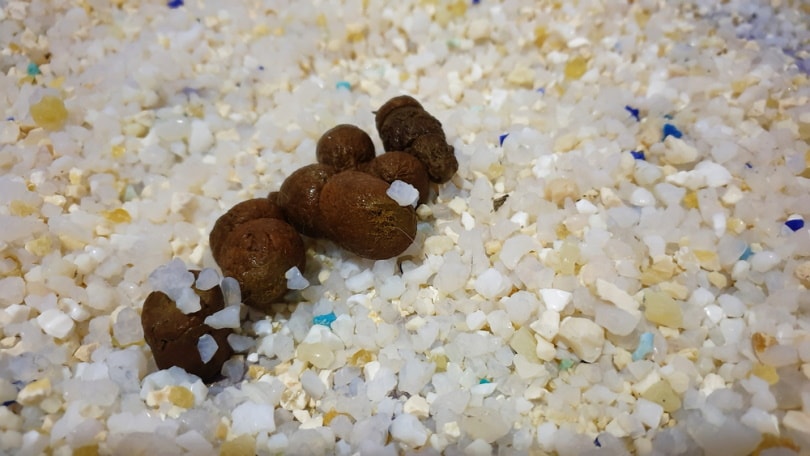
| Color | Red, red-tinged |
| Frequency | Variable |
| Possible causes | Bleeding in lower intestines, rectal wound |
If your cat’s poop is red or has a red tinge, it could be caused by fresh blood in the stool, called hematochezia.. In the case of fresh blood, the source is closer to the exit of the GI tract, such as the colon and rectum. Red poop may occur at varying frequencies and be any texture. If you notice this type of poop, contact your veterinarian. Be sure to report any other symptoms, such as pain around the rectum or excessive licking under the tail.
8. Green Poop
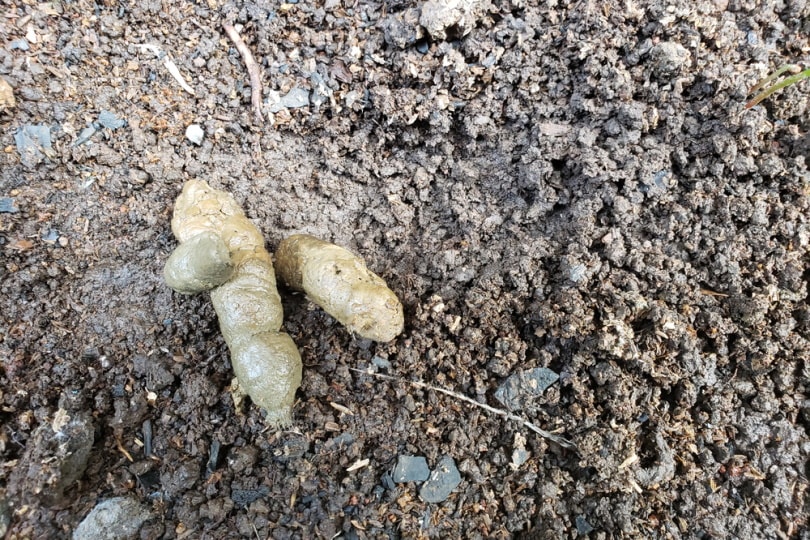
| Color | Greenish, green tinge |
| Frequency | Variable |
| Possible causes | Intestinal parasites, infection, gallbladder issues |
Your cat might turn their poop green by eating something of that color, such as grass or vegetables. However, green poop could also indicate something is wrong. Cats can have green stool due to intestinal parasites (worms) or infection. Sometimes, gallbladder trouble can also cause green poop. Any of these causes will require medical assistance, so contact your veterinarian if you spot green poop in the box.
9. Slimy Poop

| Color | Varies |
| Frequency | Variable |
| Possible causes | Bowel irritation, parasites |
If your cat’s poop looks like it’s covered in slime, it could be coated in mucus. Mucus can be clear, white, or yellow. Mucus-covered poop is often normal in texture but can be soft or loose. Possible causes of slimy poop include worms or any kind of bowel irritation. If your cat seems normal otherwise, it may be possible to wait a day or so to see if the issue resolves on its owner and otherwise contact your vet if not.
10. Yellow Poop

| Color | Yellow, brown |
| Frequency | Variable |
| Possible causes | pancreatitis, exocrine pancreatic insufficiency, liver disease |
Yellow feces has a number of possible causes, some of which can be quite serious, even life-threatening. You may also notice other parts of your cat’s body taking on a yellow hue, such as their gums, skin, and eyes, which is called icterus (jaundice). Because these usually reflect a serious condition, see a vet right away if you notice yellow poop.
11. Orange Poop

| Color | Orange, orange-brown |
| Frequency | Variable |
| Possible causes | Liver disease, gallbladder issues |
Poop of this color could indicate your cat is suffering from liver or gallbladder issues. Watch out for other symptoms such as lethargy, belly pain, vomiting, or refusing food. Call the vet if you see orange stools, and be prepared for diagnostic tests to determine what’s going on with your kitty. Your cat may need medications or even surgery to solve the orange poop crisis.
Cat Poop Chart
To help compare the different types of cat poop and what they mean, we’ve created this handy cat poop chart.
| Poop Appearance | Poop Frequency | Possible causes | What To Do |
| No poop | Not happening | Constipation, obstipation | Call the vet |
| Small, hard pieces | Less than once a day | Constipation | Call the vet |
| Pudding-like | 3+ times a day | Upset stomach, food allergies, IBD | Call the vet |
| Watery | 3+ times/day | Stress, toxin, cancer,
Intestinal disease |
Call the vet |
| Black | Varies | Upper GI bleeding | Call the vet–ASAP |
| Red | Varies | Bleeding, usually in the anus, rectum, or lower intestines | Call the vet |
| Green | Varies | Parasites, bacterial infection, gallbladder | Call the vet |
| Slimy | Varies | Bowel irritation, parasites | Call the vet |
| Yellow | Varies | Liver disease, pancreatic disease | Call the vet — ASAP |
| Orange | Varies | Liver or gallbladder disease, IMHA | Call the vet — ASAP |
Conclusion
Because our cats can’t tell us if they don’t feel well, we must observe their behaviors and poop to help us decipher their health. When you scoop your cat’s poop once or twice per day, check it out before you dump it in the trash. If you notice anything unusual, refer to our handy cat poop chart to help you make sense of it. Any time you are worried or concerned about your cat or its symptoms, don’t hesitate to talk to your veterinarian.
Featured Image Credit: RJ22, Shutterstock




